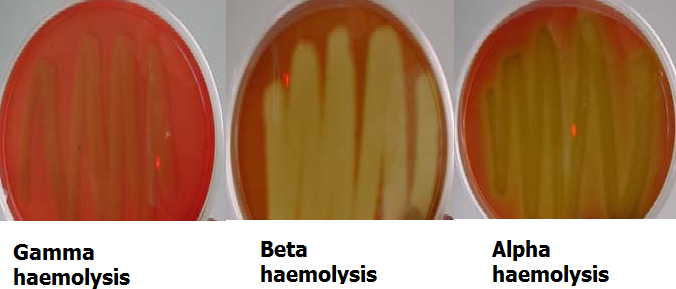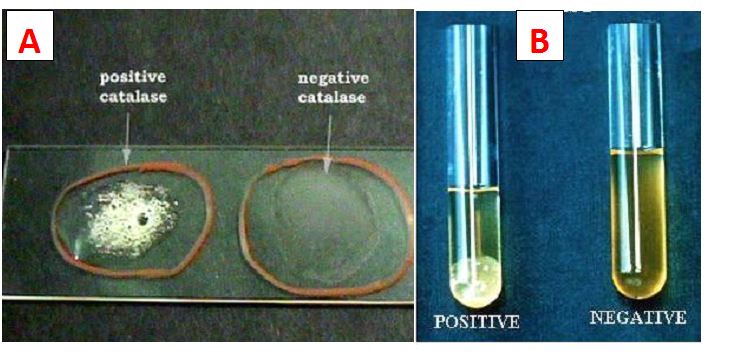Haemolysis is the breakdown of red blood cells (RBCs). Certain bacterial species including Streptococcus and Staphylococcus species produce extracellular enzymes that lyse or breakdown the red blood cell component of whole blood. Such bacteria require additional growth factors for growth; and when such bacterial species are cultured in vitro in culture media (e.g. blood agar), the microbes cause haemolysis and lyse the red blood cell component of the agar.
The bacterial species is usually surrounded by the haemolysis and this is normally seen as clearance which surrounds the organism in the center. Haemolysis of RBCs by bacteria can be partial or complete. However, there are three types of haemolysis that can be produced by bacterial species on blood agar; and these can serve as a clue to the presumptive identification of the organism in the laboratory.
Alpha (α) haemolysis, beta (β) haemolysis and gamma (γ) haemolysis are the three types of haemolysis caused by haemolytic bacteria on blood agar (Figure 1). Haemolysis caused by bacteria is often notified or observed by a zone of clearance or haemolysis that surrounds the haemolytic bacteria growing on the blood agar medium. The different types of haemolysis produced by haemolytic bacteria are:

- Alpha haemolysis: Alpha haemolysis is the partial lysis of RBCs. The haemolysis produces a greenish-gray or brownish discoloration around the colony of a haemolytic bacterium growing on blood agar. Streptococcus pneumoniae is a typical example of α-haemolytic bacteria.
- Beta haemolysis: Beta haemolysis is the complete lysis of RBCs. The haemolysis causes a complete clearance of blood from the blood culture medium on which the haemolytic bacteria is growing. Typical examples of beta-haemolytic bacteria include Group A streptococci (e.g. Streptococcus pyogenes)and Group B streptococci(Streptococcus agalactiae).
- Gamma haemolysis: In gamma haemolysis there is no lysis or breakdown of RBCs. The blood agar medium on which the haemolytic bacteria is growing does not undergo any change whatsoever as is obtainable in alpha and beta haemolysis.
References
Brooks G.F., Butel J.S and Morse S.A (2004). Medical Microbiology, 23rd edition. McGraw Hill Publishers. USA. Pp. 248-260.
Madigan M.T., Martinko J.M., Dunlap P.V and Clark D.P (2009). Brock Biology of microorganisms. 12th edition. Pearson Benjamin Cummings Publishers. USA. Pp.795-796.
Prescott L.M., Harley J.P and Klein D.A (2005). Microbiology. 6th ed. McGraw Hill Publishers, USA. Pp. 296-299.
Ryan K, Ray C.G, Ahmed N, Drew W.L and Plorde J (2010). Sherris Medical Microbiology. Fifth edition. McGraw-Hill Publishers, USA.
Singleton P and Sainsbury D (1995). Dictionary of microbiology and molecular biology, 3rd ed. New York: John Wiley and Sons.
Talaro, Kathleen P (2005). Foundations in Microbiology. 5th edition. McGraw-Hill Companies Inc., New York, USA.
Discover more from #1 Microbiology Resource Hub
Subscribe to get the latest posts to your email.


